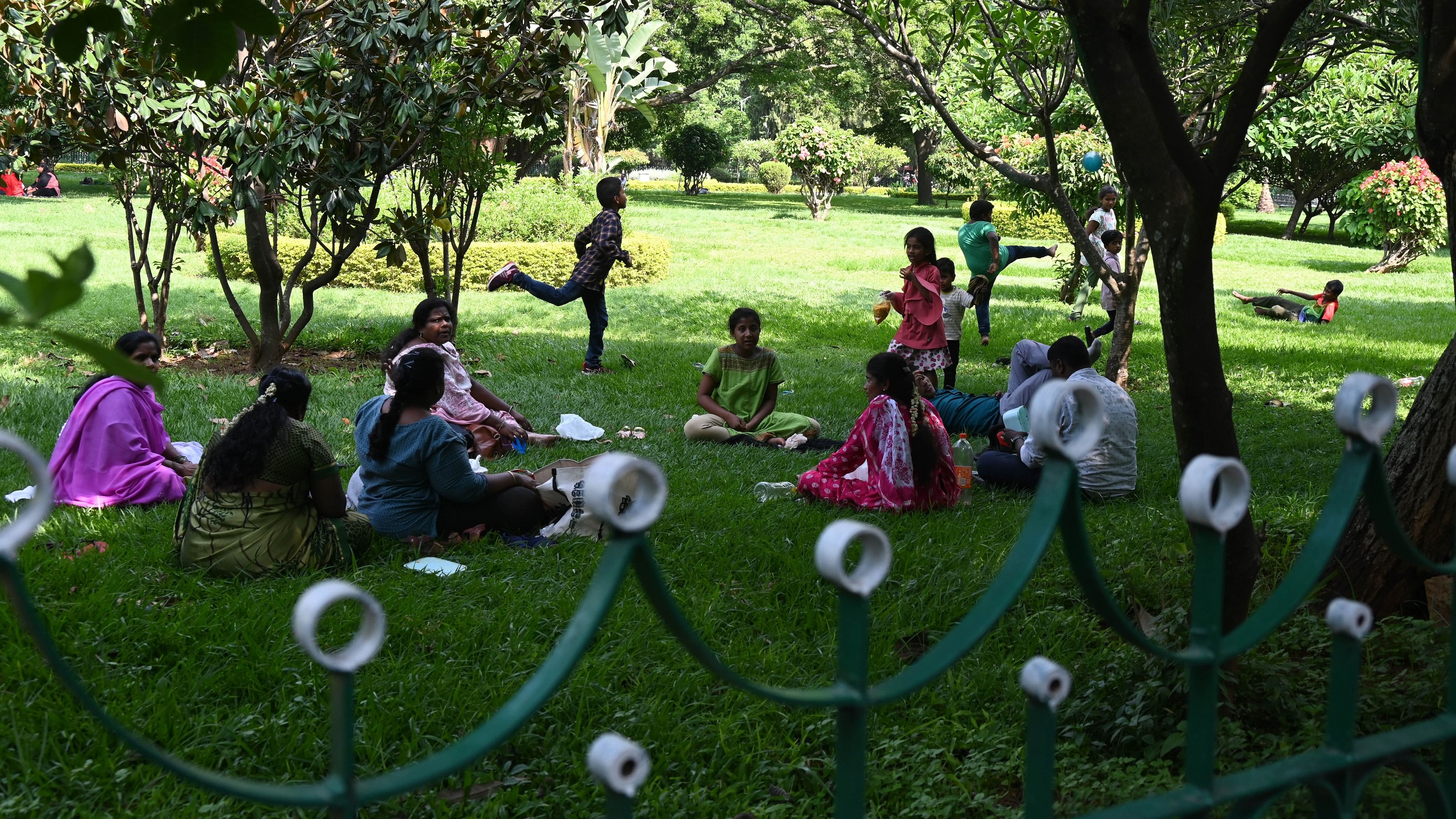
Cubbon park.
Credit: DH Photo/B K Janardhan
As the garden city of India, Bengaluru is home to about 1,200 parks. For children growing up in cities, parks offer play and recreation opportunities that are important for optimal growth and development. However, not all children have equitable access to parks, play areas and play equipment. A recent survey-based study by Pacta of 32 BBMP parks in Bengaluru revealed that parks (in the sample) scored 55 per cent on external access features (such as paved footpath around the park, gate large enough to accommodate wheelchairs, ramps at entrance) and a dismal 38 per cent on internal access features (such as stone or gravel walkway throughout the park, smooth merging of pathway and sections, and lights in the play area), meaning that much work remains to be done towards enhancing physical access to parks for children with disabilities.
In India, initiatives such as the Accessible India Campaign, 2015, the Rights of Persons with Disabilities Act, 2016, and the Smart Cities Mission, 2015, provided for enhancing the accessibility of public spaces for children with disabilities and the right to play, recreation and leisure activity. These policies led the National Institute of Urban Affairs (NIUA) to chart guidelines on 'Creating accessible parks and play spaces: A how-to guide for Indian cities' in 2019. In Bengaluru, an NGO called KilliKilli mobilised civil society action towards making some parks inclusive in the early 2010s. In 2022, Cubbon Park inaugurated a play area exclusively for children with disabilities. While efforts are being made to enable access for people with disabilities across public spaces such as museums in Bengaluru, children with disabilities are left without adequate and accessible spaces to play in the city.
In the study, accessibility of parks was defined through features that allowed ease of mobility, were barrier-free, and provided for usage of a facility. The survey showed that parks on average had 36 per cent features that made them accessible. To elaborate, most parks did not have features to enable access to play areas. For instance, most parks did not have soft floorings and sand pits in the play areas. Similarly, ramps leading into the play area were rare features. Thus, children with disabilities who have mobility restrictions or are dependent on wheelchairs cannot access play areas with ease. Furthermore, considering the other accessibility features of the park, in most cases, the parks did not include western toilets, spaces for washing hands and drinking water facilities.
Parks fared better on features such as footpaths around them, paved walkways inside, gates large enough for wheelchairs, provision of ramps and railings at the park entrances, and proper fences. Thus, some important aspects of access are already present in many parks. However, much remains to be done to make these parks accessible for children with disabilities. Cubbon Park, located in central Bengaluru, had the best scores for access among the parks surveyed.
For this research study, the concept of inclusion was related to enabling participation and engagement, and non-segregation of spaces within the park. The survey found that, on average, a park in the sample had 57 per cent of the features that enabled inclusion. Several parks in the sample scored above the average score (Udayashankar Children’s Park, 3rd Cross Rd Park, Tamarind Tree Children's Park, Domlur SAARC Park, Wipro Park, and so on), highlighting that some parks have created many of the features of inclusion.
However, in many parks, the play equipment was designed to cater to specific age groups of children and did not allow for universal participation. Only a few parks had equipment such as bucket-type seating and only one park in the sample had wheelchair-accessible merry-go-rounds (i.e., Cubbon Park).
Despite the relatively better score of parks on inclusion (57 per cent) than accessibility (37 per cent), the absence of inclusive and accessible components in parks leads to inequality in play, and segregation between typically developing children and children with disabilities. In the past, there have been only a few sporadic initiatives in Bengaluru by the government, civil society and corporate social responsibility funders. But unlike other cities such as Mumbai and Kolkata, Bengaluru’s smart city project does not make any commitment towards inclusive parks. Such isolated and sporadic efforts are insufficient to reinvent parks as inclusive spaces and do not provide the minimum critical mass to foster change. The only response to achieving the critical mass is to rework existing parks to become more accessible and inclusive. Philanthropists, urban planners, government actors, citizen groups and civil society initiatives must together create more high-pitched momentum on making parks more inclusive and accessible so that truly, no child is left behind.
(The writer leads disability research at Pacta, a law firm for the social sector and policy think tank)